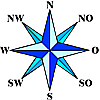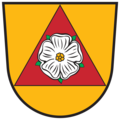Rosegg
Appearance
Rosegg
Rožek | |
|---|---|
 Rosegg from north | |
| Coordinates: 46°34′N 14°1′E / 46.567°N 14.017°E | |
| Country | Austria |
| State | Carinthia |
| District | Villach-Land |
| Government | |
| • Mayor | Franz Richau |
| Area | |
• Total | 19.17 km2 (7.40 sq mi) |
| Elevation | 477 m (1,565 ft) |
| Population (2018-01-01)[2] | |
• Total | 1,832 |
| • Density | 96/km2 (250/sq mi) |
| Time zone | UTC+1 (CET) |
| • Summer (DST) | UTC+2 (CEST) |
| Postal code | 9232 |
| Area code | 04253, 04274 |
| Website | www.roseggonline.at |
Rosegg (Slovene: Rožek) is a municipality in the district of Villach-Land in Carinthia in Austria.
Geography
[edit]Rosegg consists of three catastral municipalities (Katastralgemeinden) (Population as of 2025):[3]
- Berg (490)
- Emmersdorf (562)
- Rosegg (858)
Rosegg can be further divided into 18 localities (Ortschaften) (Population as of 2025):[3]
- Berg (66)
- Bergl (166)
- Buchheim (83)
- Dolintschach (34)
- Drau (92)
- Duel (81)
- Emmersdorf (120)
- Frög (130)
- Frojach (5)
- Kleinberg (45)
- Obergoritschach (50)
- Pirk (83)
- Raun (58)
- Rosegg (461)
- St. Johann (18)
- St. Lamprecht (184)
- St. Martin (136)
- Untergoritschach (98)
Neighboring municipalities
[edit]| Wernberg | Velden am Wörthersee | |
| Villach | 
|
|
| Finkenstein am Faaker See | Sankt Jakob im Rosental |
Personalities
[edit]It is the birthplace of the painter Peter Markovič, after whom the local Slovene cultural association is named. Liechtenstein's Former Ambassador to Germany, Prince Stefan of Liechtenstein, grew up in Rosegg.[4]
Politics
[edit]The municipal assembly (Gemeinderat) consists of 15 members. Since the 2021 local elections, it is made up of the following parties:
- Independent Bürgergemeinschaft (BGM): 8 seats
- Social Democratic Party of Austria (SPÖ): 5 seats
- Freedom Party of Austria (FPÖ): 1 seat
- The Greens - The Green Alternative (GRÜNE): 1 seat
The mayor of the municipality, Franz Richau, was re-elected in 2021.[5]
Twin towns
[edit] Zuglio, Italy
Zuglio, Italy
Sources
[edit]- ^ "Dauersiedlungsraum der Gemeinden Politischen Bezirke und Bundesländer - Gebietsstand 1.1.2018". Statistics Austria. Retrieved 10 March 2019.
- ^ "Einwohnerzahl 1.1.2018 nach Gemeinden mit Status, Gebietsstand 1.1.2018". Statistics Austria. Retrieved 9 March 2019.
- ^ a b "Bevölkerung zu Jahres-/Quartalsanfang". STATISTIK AUSTRIA (in Austrian German). Retrieved 2025-07-26.
- ^ "Curriculum Vitae" (PDF). regierung.li. Retrieved 2013-08-06.
- ^ "Ergebnisse und Visualisierungen zur Gemeinderatswahl in Kärnten 2021". orf.at (in German). Retrieved 2025-07-24.
Wikimedia Commons has media related to Rosegg.


